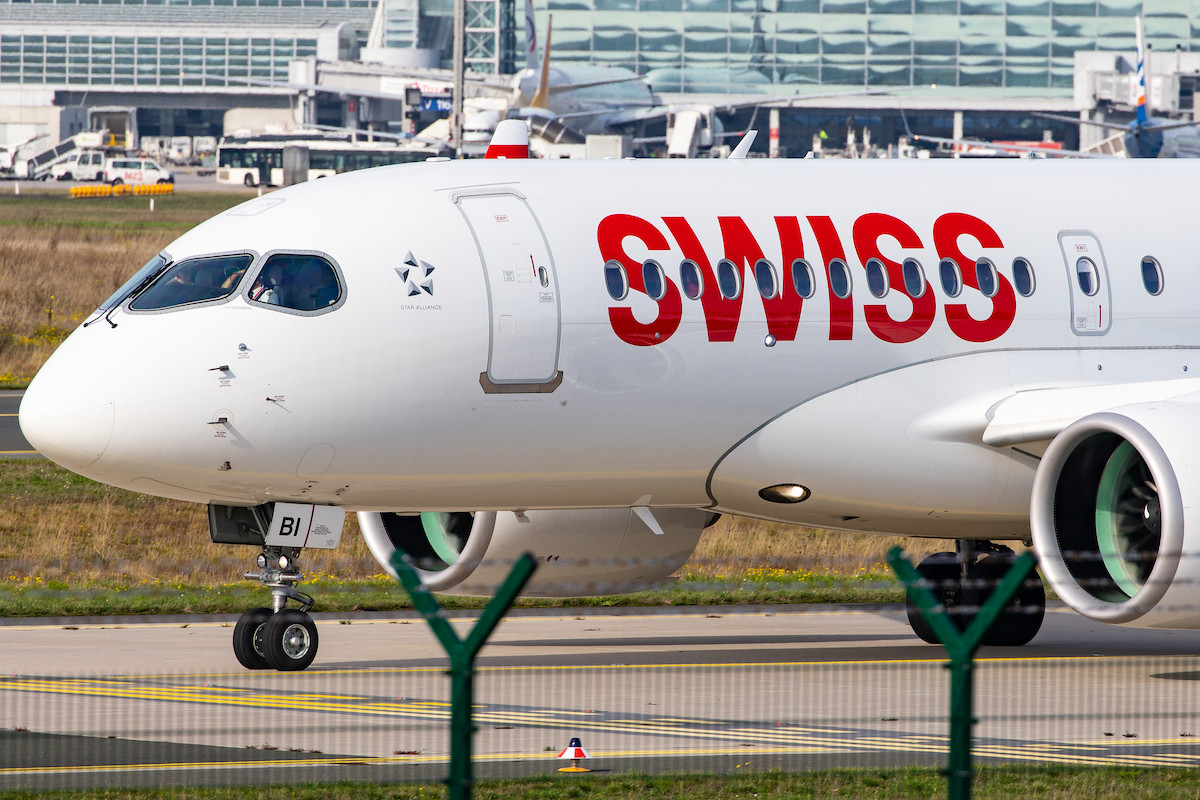Lufthansa Group Reaches First Post-Pandemic Annual Profit Thanks to Swiss Air, Cargo

Photo Credit: Flickr / Kevin Hackert
Thank you, Swiss International Air Lines. Thank you, cargo. And thank you, maintenance. It’s these three businesses that propelled Europe’s Lufthansa Group to a $313 million net profit for the fourth quarter of 2022. Operating margin excluding special items was 6.5 percent, up from 3.5 percent in the same quarter of 2019.
Consistent with long-running trends, Lufthansa’s 6.5 percent margin figure was worse compared with that of International Airlines Group's 8 percent operating margin but better than Air France-KLM's 2 percent. The same relative positions held for all of 2022 as well, though the margin gap between the three airline groups was narrower: IAG 5.4 percent, Lufthansa 4.6 percent, and Air France-KLM 4.5 percent.
Returning to the fourth quarter numbers, the Lufthansa-branded airline earned a disappointing 3 percent operating margin, a bit worse than its performance in 2019. Swiss was once again a superstar, growing its margin from 8 percent pre-crisis to 15 percent last quarter — an amazing result for the offpeak fourth quarter. Austrian Airlines, which had an uncharacteristically great summer, fell back to earth, with a margin that was slightly below breakeven; it was slightly above breakeven three years earlier. Eurowings and Brussels Airlines continue to weigh on the group’s success, with margins of negative 14 and 11 percent, respectively. But cargo had another fantastic quarter with a 28 percent margin, and maintenance was solid as well at 7 percent. Like Swiss, the cargo and maintenance units improved their results relative to 2019, and in cargo’s case by a lot.
With 2023 now underway, Lufthansa is busy buying more aircraft and announcing new product upgrades. In recent days, it’s trumpeted more orders for 22 more Airbus A350s and Boeing 787s, plus a new longhaul inflight offering for the Lufthansa- and Swiss-branded airlines. By 2030, the group expects to have added 200 new aircraft, with 35 scheduled to arrive this year — pending production delays currently plaguing Boeing and Airbus. The newly arriving planes will lead to fleet simplification, lower unit costs, and lower carbon emissions.
Planes aside, Lufthansa says its top priorities are product, people, and profitability. Regarding the latter, it targets an operating margin of at least 8 percent by 2024, though it does expect to lose money in the current January-to-March quarter. Bookings remain strong, for travel both this quarter and even more so next quarter; Easter in early April is looking “extremely” strong. Only Asia is still far behind 2019 traffic levels, though management is starting to see improvement in key markets like Japan and is hopeful about a revival in China. Worldwide, leisure demand is driving the current strength, with many leisure passengers booking premium seats. Yields overall are running about 20 percent above 2019 levels, though costs are up sharply as well. Lufthansa expects unit costs to come down as it brings capacity back to near what it was in 2019.
Lufthansa’s home markets, led by Germany, Switzerland, and Austria, have been among the slowest worldwide to rebuild capacity back to pre-pandemic levels. But that’s in part because of big retreats by low-cost carriers. EasyJet’s second quarter seats from these three countries will be down 45 percent from four years earlier, according to Diio by Cirium. Ryanair will be up in Austria and Switzerland but down 18 percent in Germany. Naturally, such reductions have helped lift Lufthansa’s shorthaul yields.
Strategically, the group is looking to divest non-core assets. “One thing is clear,” Chief Financial Officer Remco Steenbergen said, “we aim to develop from an aviation group into an airline group.” That means selling its catering and payments businesses, as well as a stake in its maintenance business. “Interest is very high” with respect to maintenance. But CEO Carsten Spohr made clear the company would not sell its Miles&More loyalty plan.
More interesting than what Lufthansa is selling is what it's buying. Italy’s ITA Airways remains a target, with Spohr again emphasizing the importance of the Italian market. Even now, Italy is generating strong premium demand through Lufthansa’s hubs. The risk of course is that ITA joins Brussels Airlines and Eurowings as a chronically unprofitable segment, dragging down groupwide earnings. That’s precisely what happened with ITA’s hapless predecessor Alitalia, which was a financial albatross for Air France-KLM during the years it owned a 25 percent stake. Lufthansa said it has a plan to make ITA profitable.
In more general terms, Spohr’s strategic vision is to become more international, reducing the group’s heavy reliance on west-central Europe, where labor costs are high and economies — especially Germany’s — are overexposed to trading with China and manufacturing internal combustion automobiles.
On the other hand, risks specific to the global airline business are in many ways easing, not worsening, Lufthansa believes. Spohr said he agrees with United CEO Scott Kirby that industry capacity will stay constrained for “many years” (Spohr’s words) even as demand steadily increases. Spohr points to labor shortages at airports and suppliers, aircraft delivery bottlenecks, and aircraft parts shortages. Lufthansa itself, meanwhile, intends to add capacity more conservatively than rivals, and that should help with both profits and operations.
Speaking of operations, the group does not foresee any major issues at its Brussels, Vienna, and Zurich hubs this summer. It sounds somewhat less confident about Frankfurt and Munich.
